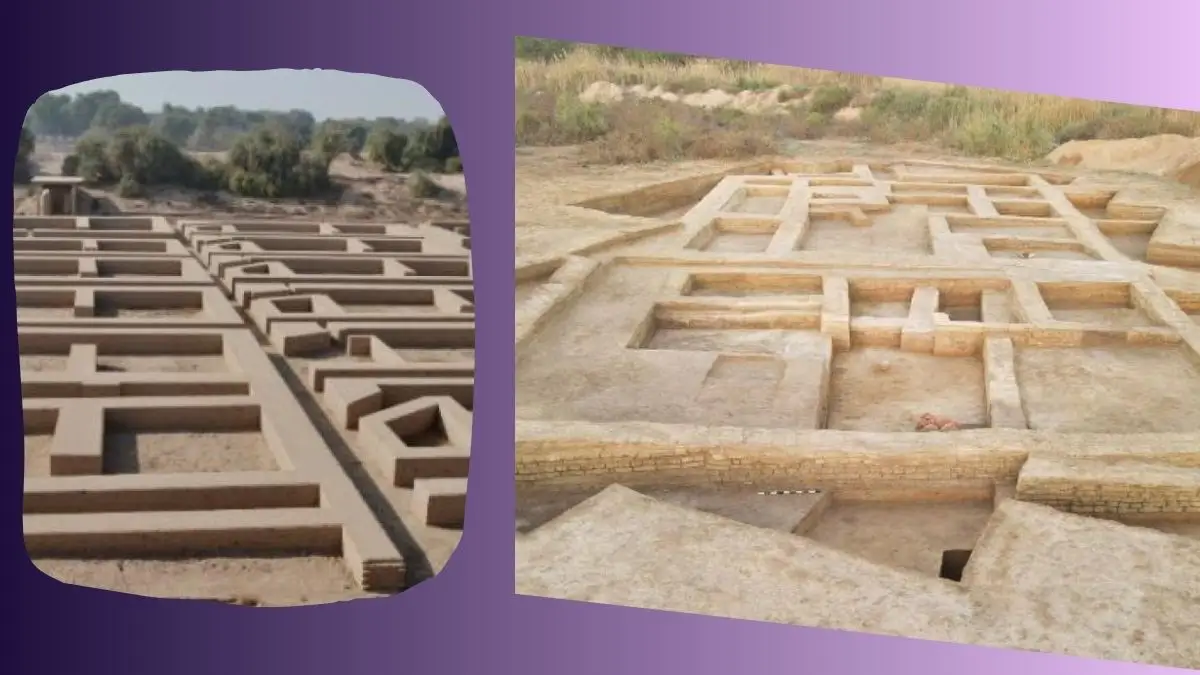The Haryana government has officially declared two Harappan civilization sites located in Bhiwani district — Mitathal and Tighrana — as protected archaeological sites and monuments. These sites, dating back over 4,400 years, hold immense historical and cultural value, shedding light on the evolution of early agricultural societies, town planning, craft industries, and trade during the Harappan and post-Harappan periods. The sites have now been brought under legal protection through a notification issued by the Haryana Heritage and Tourism Department under the Haryana Ancient and Historical Monuments and Archaeological Sites and Remains Act, 1964. The move aims to safeguard these ancient settlements from encroachment and damage, with fencing and security arrangements to be implemented.
Key Highlights
Legal Protection
- Notification issued on March 13, 2025, by Kala Ramachandran, Principal Secretary of Haryana Heritage and Tourism.
- Protected under the Haryana Ancient and Historical Monuments and Archaeological Sites and Remains Act, 1964.
- The site at Mitathal spans 10 acres.
Mitathal Site (Harappan Civilization)
- First discovered in 1913, with a hoard of coins belonging to Samudra Gupta (Gupta dynasty).
- Excavated in 1968, revealing the Copper-Bronze Age culture of the Indo-Gangetic divide (3rd–2nd millennia BCE).
- Excavations from 1965 to 1968 uncovered proto-historic material, including beads and copper implements.
Archaeological features
- Harappan-style town planning, architecture, arts, and crafts.
- Pottery: Sturdy red ware, well-burnt and painted in black with pipal leaf, fish scale, and geometric designs.
- Artifacts: Beads, bangles, terracotta, and objects made of stone, shell, copper, ivory, and bone.
Tighrana Site (Post-Harappan/Chalcolithic Culture)
- Settlement dating back to around 2,400 BCE.
- Inhabited by Chalcolithic agricultural communities called Sothians.
- Located at Chang, Mitathal, Tighrana, and nearby regions.
Settlement features
- Thatched-roofed mud-brick houses, possibly fortified.
- 50 to 100 houses per settlement.
Lifestyle and tools
- Agriculture and domestication of animals: cows, bulls, goats.
- Use of wheel-made ceramics, painted in bichrome black-and-white designs.
- Use of copper, bronze, and stone tools in large numbers.
- Craft industry: Presence of beads and green carnelian bangles indicates jewelry and bead-making trade.
- Discoveries include remains from Pre-Siswal, Pre-Harappan, and Post-Harappan periods — making it a significant chronological settlement site.
| Summary/Static | Details |
| Why in the news? | Haryana Declares Two Harappan Sites as Protected Archaeological Monuments |
| Declared Sites | Mitathal and Tighrana (Bhiwani district, Haryana) |
| Period | Mitathal – Harappan (3rd–2nd millennium BCE);
Tighrana – Chalcolithic to Post-Harappan (from ~2400 BCE) |
| Legal Protection | Declared protected under the Haryana Ancient and Historical Monuments and Archaeological Sites and Remains Act, 1964 |
| Mitathal | – First Discovery 1913
– Hoard of coins belonging to Gupta ruler Samudra Gupta |
| Excavations at Mitathal | 1965–68 (initial), later by Central University of Haryana in 2016, 2020, 2021, 2024 |
| Cultural Features | – Mitathal Harappan town planning, red ware pottery painted with black pipal leaf, fish scale, and geometric designs |
| Artifacts | – Mitathal Beads, bangles, terracotta, copper, shell, ivory, bone, and stone objects |
| Tighrana | – Settlement Type Mud-brick homes with thatched roofs, possibly fortified settlements with 50–100 houses |
| Tighrana | – Cultural Group Inhabited by Chalcolithic agricultural community known as Sothians |
| Lifestyle at Tighrana | Agriculture, domestication (cows, bulls, goats), use of wheel-made bichrome pottery, and copper/bronze tools |
| Craft Industry | – Tighrana Thriving bead-making and jewellery production, including green carnelian bangles |
| Chronological Significance | Tighrana has layers of Pre-Siswal, Pre-Harappan, and Post-Harappan settlements |



 Viksit Bharat Shiksha Adhishthan Bill, 2...
Viksit Bharat Shiksha Adhishthan Bill, 2...
 Vice-President Releases Commemorative St...
Vice-President Releases Commemorative St...
 Cabinet Nod to Atomic Energy Bill Unlock...
Cabinet Nod to Atomic Energy Bill Unlock...







